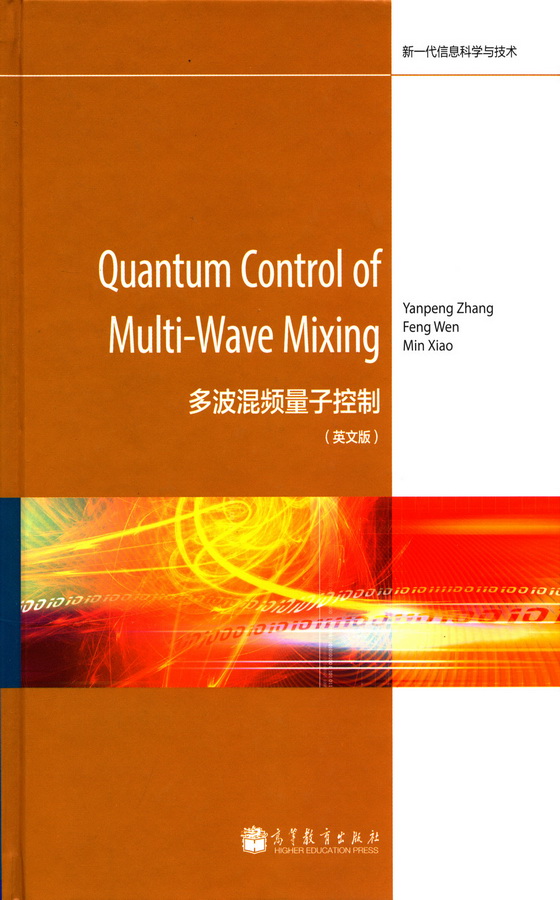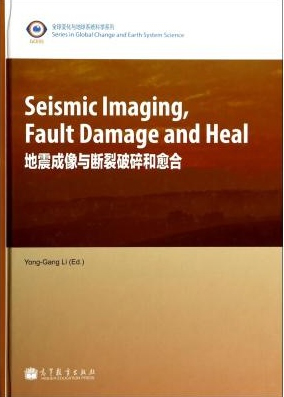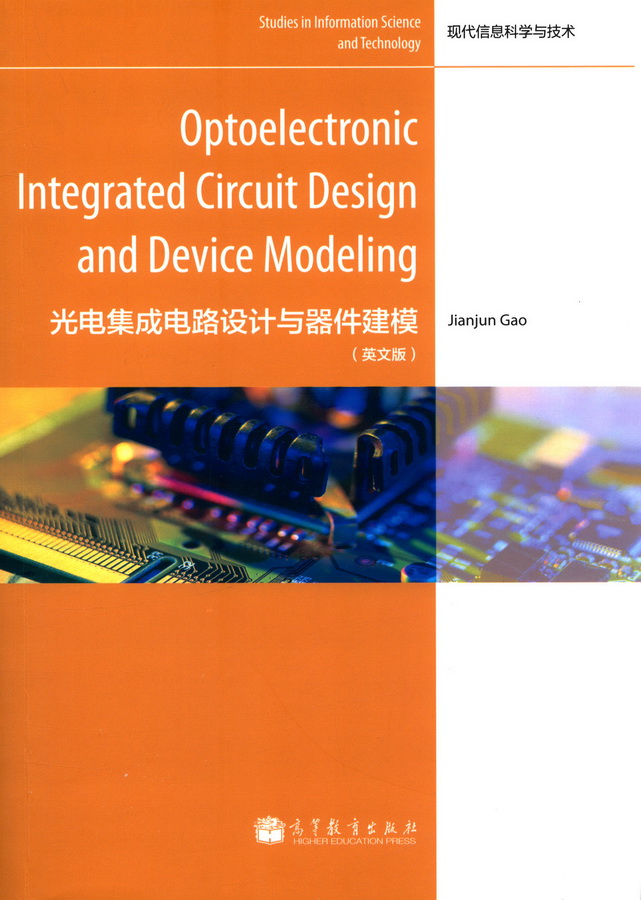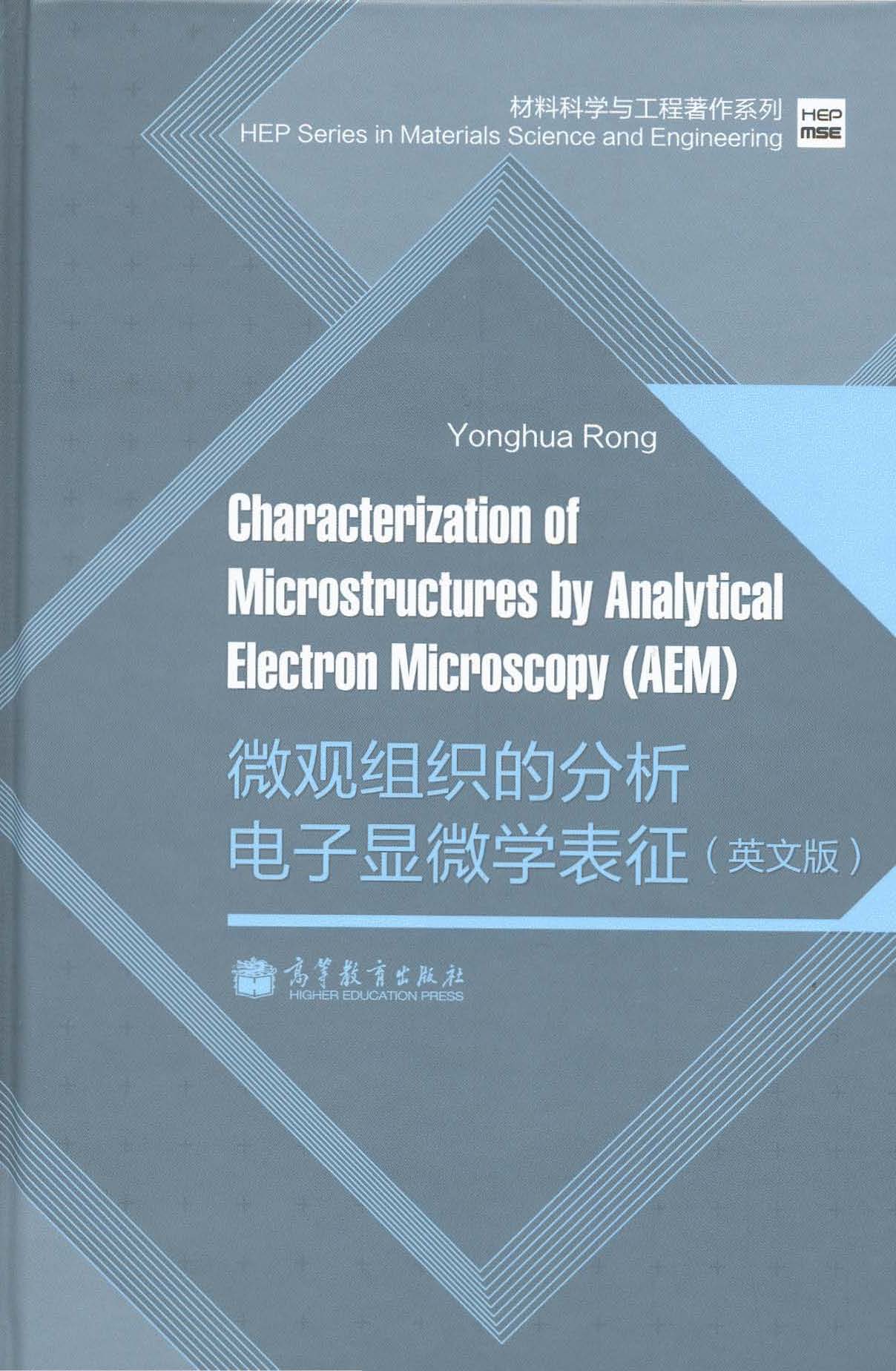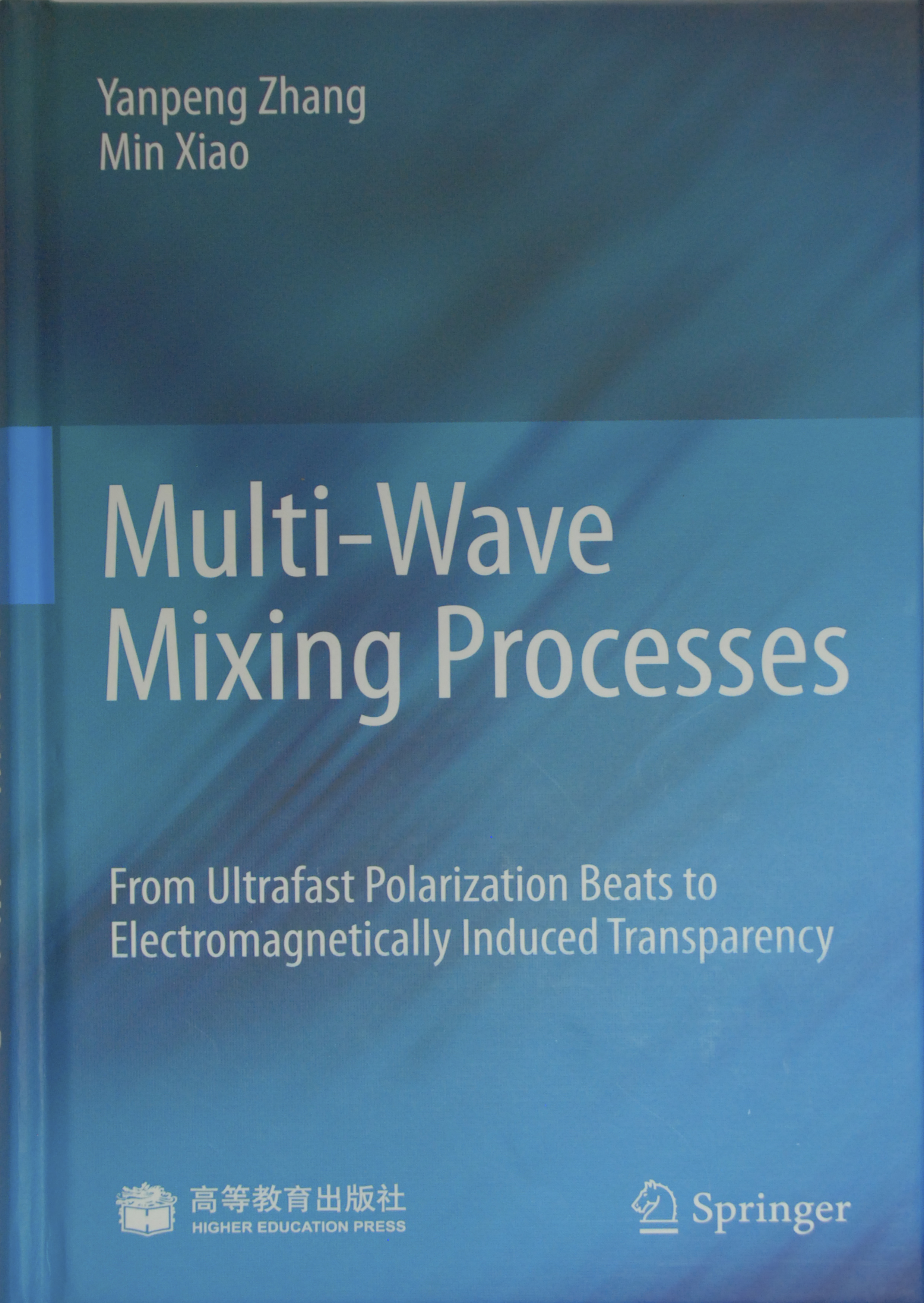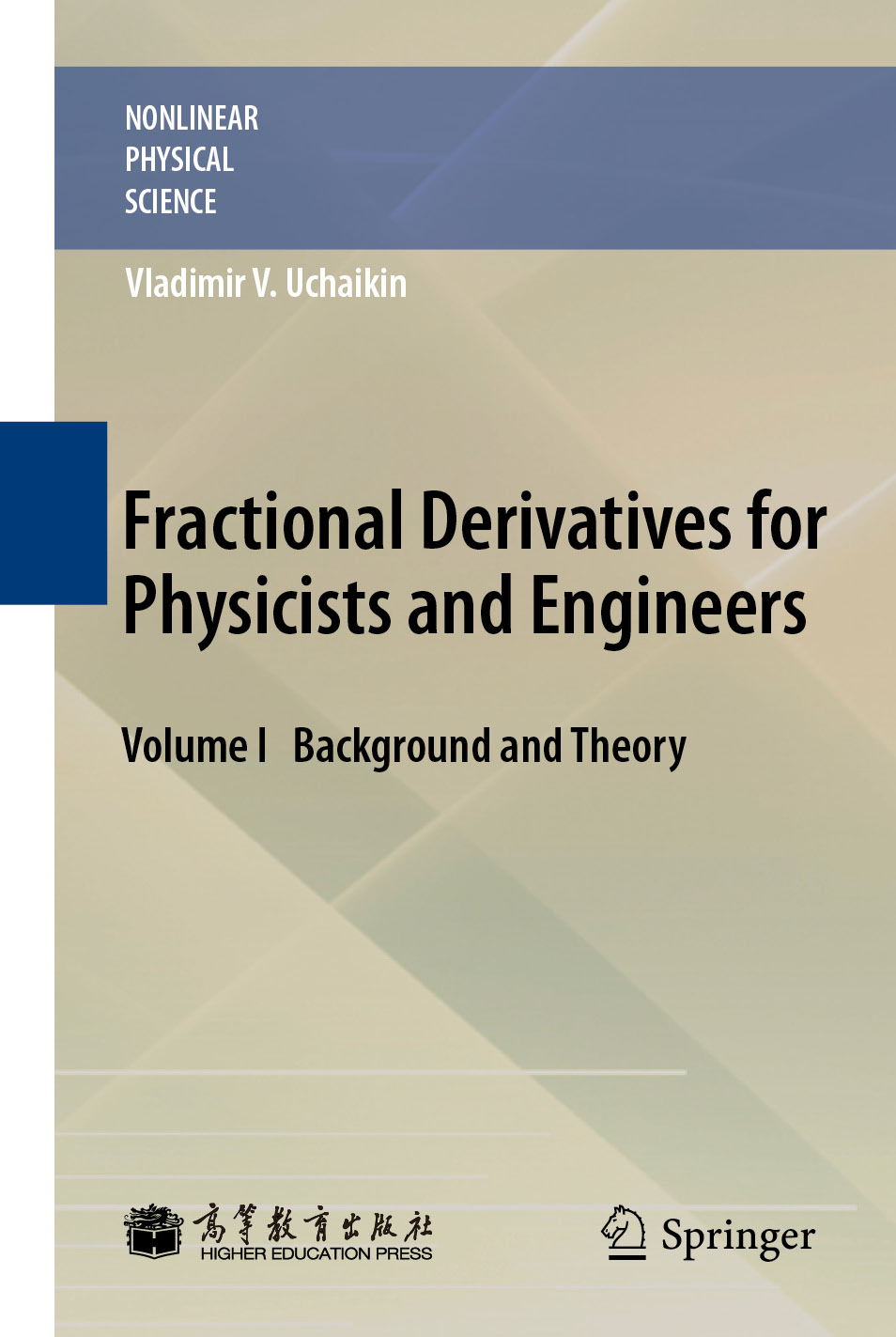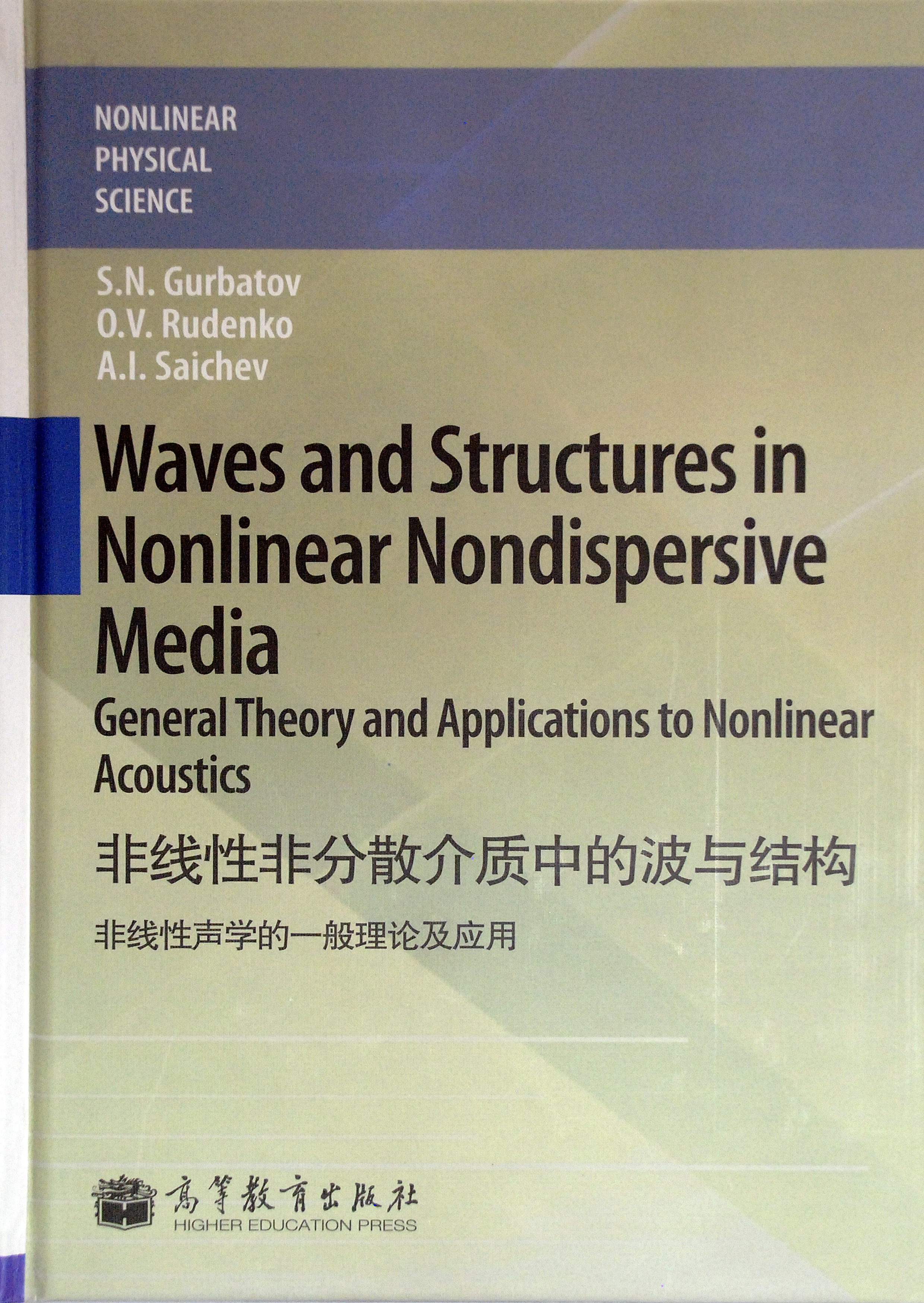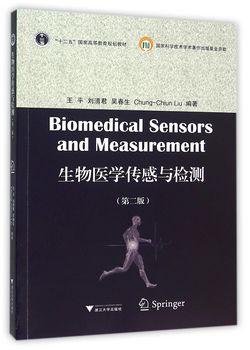多波混频量子控制(英文版)
作者: Yanpeng Zhang等
出版时间:2014-01
出版社:高等教育出版社
- 高等教育出版社
- 9787040391336
- 1版
- 227407
- 48266940-5
- 精装
- 16开
- 2014-01
- 450
- 337
- 工学
- 电子信息类
- TN2
- 电子、电气信息类
- 本科 研究生及以上
《多波混频量子控制(英文版)》讨论基于原子相干诱导的多能级原子系统中多波混频过程频率、时域与空域的相互作用,涉及七个方面的内容:多能级多色激光相干产生的共存多波混频及相互作用;电磁感应透明介质中四波混频与六波混频信号的Autler Townes分裂及抑制或增强过程;Zeeman能级间多波混频过程在频域和空域的调制;自由空间和环形腔中共存多波混频之间的关联以及纠缠过程;超窄带荧光和共存多波混频信号的噪声关联;电磁感应光栅所形成的光子带隙中多波混频信号的空间过程,包括空间干扰、矢量孤子、Talbot效应等;利用多波混频空间效应设计的全光开关、路由器、信号波分复用器等非线性光子器件。
前辅文
1 Introduction
1.1 Suppression and Enhancement Conditions of the FWM Process
1.1.1 Dressed State Theory
1.1.2 Dark-State Theory in MWM Processes
1.1.3 Suppression and Enhancement Conditions
1.2 Fluorescence in MWM
1.3 MWM Process in Ring Optical Cavity
1.3.1 High-Order Cavity Mode Splitting with MWM Process
1.3.2 Squeezed Noise Power with MWM
1.3.3 Three-Mode Continuous-Variable Entanglement with MWM
1.4 Photonic Band Gap
1.4.1 Periodic Energy Level
1.4.2 Method of Transfer Matrix
1.4.3 Nonlinear Talbot Effect
1.4.4 Third- and Fifth-Order Nonlinearity
1.5 MWM with Rydberg Blockade
1.6 Summary
References
2 MWM Quantum Control via EIT
2.1 Interference of Three MWM via EIT
2.1.1 Experiment Setup
2.1.2 Basic Theory
2.1.3 Results and Discussions
2.1.4 Conclusion
2.2 Observation of EWM via EIT
2.2.1 Basic Theory
2.2.2 Experimental Results
2.2.3 Conclusion
2.3 Controlled MWM via Interacting Dark States
2.3.1 Basic Theory
2.3.2 Multi-Wave Mixing (MWM)
2.3.2.1 Four-Wave Mixing (FWM)
2.3.2.2 Four-Dressing SWM
2.3.2.3 Four-Dressing EWM
2.3.2.4 Four-Dressing EIT
2.3.3 Numerical Results and Discussion
2.3.3.1 Five-Dressing FWM
2.3.3.2 Four-Dressing SWM
2.3.3.3 Four-Dressing EWM
2.3.3.4 Absorption and Dispersion in the Four-Dressing EIT System
2.3.4 Discussion and Conclusion
2.4 Observation of Dressed Odd-Order MWM
2.4.1 Basic Theory and Experimental Scheme
2.4.2 Dressed Odd-Order MWM
2.4.3 Conclusion
References
3 Controllable Autler-Townes Splitting of MWM Process via Dark State
3.1 Measurement of ac-Stark Shift via FWM
3.1.1 Experiment and Basic Theory
3.1.2 Experiment and Result
3.1.3 Conclusion
3.2 Evidence of AT Splitting in FWM
3.2.1 Basic Theory
3.2.2 Experimental Results
3.3 Observation of AT Splitting in SWM
3.3.1 Theoretical Model and Experimental Scheme
3.3.2 Experiment and Result
3.3.3 Conclusion
References
4 Controllable Enhancement and Suppression of MWM Process via Dark State
4.1 Enhancing and Suppressing FWM in EIT Window
4.1.1 Theory and Experimental Results
4.1.2 Experiment and Result
4.1.3 Conclusion
4.2 Cascade Dressing Interaction of FWM Image
4.2.1 Theoretical Model and Experimental Scheme
4.2.2 Cascade Dressing Interaction
4.2.3 Conclusion
4.3 Multi-Dressing Interaction of FWM
4.3.1 Theoretical Model
4.3.2 Experimental Result
4.3.2.1 Single-Dressed DFWM
4.3.2.2 Doubly-Dressed DFWM
4.3.2.3 Triply-Dressed DFWM
4.3.2.4 Power Switching of Enhancement and Suppression
4.4 Enhancement and Suppression of Two Coexisting SWM Processes
4.4.1 Theoretical Model and Experimental Scheme
4.4.2 Experimental Results
4.4.3 Conclusion
References
5 Controllable Polarization of MWM Process via Dark State
5.1 Enhancement and Suppression of FWM via Polarized Light
5.1.1 Theoretical Model and Analysis
5.1.2 Experimental Results
5.1.3 Conclusion
5.2 Polarization-Controlled Spatial Splitting of FWM
5.2.1 Theoretical Model and Experimental Scheme
5.2.2 Spatial Splitting of FWM Beam
5.3 Coexisting Polarized FWM
5.3.1 Experiment Setup
5.3.2 Theoretical Model
5.3.3 Results and Discussions
5.4 Polarized Suppression and Enhancement of SWM
5.4.1 Theoretical Model and Experimental Scheme
5.4.2 Polarized Suppression and Enhancement
5.4.3 Conclusion
References
6 Exploring Nonclassical Properties of MWM Process
6.1 Opening Fluorescence and FWM via Dual EIT Windows
6.1.1 Theory and Experimental Scheme
6.1.2 Fluorescence and FWM via EIT Windows
6.2 Phase Control of Bright and Dark States in FWM and Fluorescence Channels
6.2.1 Theory and Experimental Scheme
6.2.2 Theory and Experimental Results
6.3 Observation of Angle Switching of Dressed FWM Image
6.3.1 Introduction
6.3.2 Theoretical Model and Experimental Scheme
6.3.3 Experimental Results and Theoretical Analyses
6.4 Three-Photon Correlation via Third-Order Nonlinear Optical Processes
6.4.1 Theory and Experimental Scheme
6.4.2 Theory and Experimental Results
6.4.3 Conclusion
6.5 Vacuum Rabi Splitting and Optical Bistability of MWM Signal Inside a Ring Cavity
6.5.1 Introduction
6.5.2 Basic Theory
6.5.3 VRS of Zero-Order Mode
6.5.3.1 Multi-Dressed VRS
6.5.3.2 Avoided Crossing Plots
6.5.3.3 Suppression and Enhancement of MWM
6.5.4 VRS of High-Order Modes
6.5.5 Steady-State Linear Gain and OPO Threshold
6.5.6 OB Behavior of MWM
6.5.6.1 OB of Zero-Order Mode
6.5.6.2 OB of High-Order Modes
6.5.7 Conclusion
References
7 Coherent Modulation of Photonic Band Gap in FWM Process
7.1 Spatial Interplay of Two FWM Images
7.1.1 Introduction
7.1.2 Theoretical Model and Experimental Scheme
7.1.3 The Interplay of Two FWM Beams
7.2 Optical Vortices Induced in Nonlinear Multi-Level Atomic Vapors
7.2.1 Introduction
7.2.2 Theoretical Model and Numerical Simulation
7.2.3 Conclusion
7.3 Multi-Component Spatial Vector Solitons of FWM
7.3.1 Basic Theory and Experimental Scheme
7.3.2 Experimental Observation of Multi-Component Solitons
7.3.3 Conclusion
7.4 Surface Solitons of FWM in EIL
7.4.1 Basic Theory and Experimental Scheme
7.4.2 Fluorescence and FWM via EIT Windows
7.4.3 Conclusion
7.5 Multi-Wave Mixing Talbot Effect
7.5.1 Introduction
7.5.2 Theoretical Model and Analysis
7.5.3 Suppression and Enhancement Conditions
7.5.4 Talbot Effect of MWM Signals
7.5.5 Conclusion
References
8 Optical Routing and Space Demultiplexer of MWM Process
8.1 Optical Switching and Routing
8.1.1 Introduction
8.1.2 Theoretical Model and Experimental Scheme
8.1.3 Optical Switching and Routing via Spatial Shift
8.2 All-Optical Routing and Space Demultiplexer
8.2.1 Theoretical Model and Experimental Scheme
8.2.2 Optical Switching and Routing
8.2.3 Conclusion
References
Index

